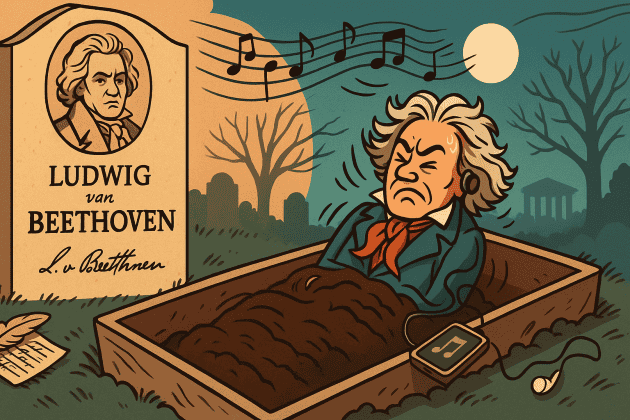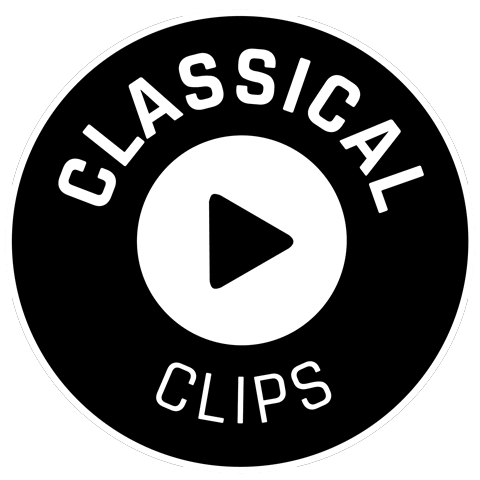
I love the canon. I grew up with scores spread across my desk, trying my best to transcribe Classical era masterpieces, and falling asleep with Brahms in my ears. I still believe in tonal gravity, long lines, and the dignity of silence before the downbeat. Yet the more I study and observe, the clearer it becomes that classical music only stays itself by changing. The twentieth century taught that lesson with a jolt. The twenty-first is teaching it with a thousand subtle nudges. Here’s my case for reverent evolution.
Start where the century turns. In the early nineteen-hundreds, composers stretched tonality until it snapped, then found new anchors. Debussy showed how harmony can float without losing shape, as in “Clair de Lune”, a lesson in color that still teaches more than many textbooks. Stravinsky proved rhythm can be the drama itself. If you want to feel the shock that changed the orchestra, sit with his ballet world and its satellites, like Petrushka or the fierce lyricism of his “Elegy for Solo Viola”. Schoenberg took courage to the edge, then designed a new set of rules for hearing, a path you can glimpse on the Schoenberg composer page with references to “Verklärte Nacht,” “Pierrot,” and the rigors of twelve-tone thought.
The twentieth century did not abandon beauty. It added to where beauty is found. Barber’s “Adagio for Strings” proves that a single melody, carefully breathed, can carry public grief. Ravel’s “Boléro” shows orchestration itself can be the narrative. Bartók anchors an entire modern language in folk DNA, from the x-ray hush of Music for Strings, Percussion and Celesta, to the earthy snap of his dances. Prokofiev’s energy still feels urban and fresh, even when it’s historical film music like “The Battle on the Ice”. Britten fused conscience and craft in works like the War Requiem, a framing you can revisit on the Britten biography. This is the century when the concert hall widened, not weakened.
Then the twenty-first arrived, and something quieter happened. Composers did not choose one style. They chose plurality, and the scene became a commons. Classical Music by Century sketches the arc from the medieval to right now, pointing to contemporary milestones like Adams’ Doctor Atomic, Adès’ The Tempest, and Shaw’s Partita, which is a good gateway for anyone scanning recent landmarks. The post-Y2K sound world is often less about breaking the past and more about braiding it. Modal inflections sit beside spectral shimmer. Neo-romantic warmth shares a program with post-minimal pulse. You will find it in orchestral subscription seasons, but you will just as often find it in a church sanctuary, or a campus recital where the percussionists wheel in an armory of objects.
Technology is not a threat to the string section. It is a set of tools that can serve it. Many of us at school are bilingual now. We live in notation software that forces clarity. We record with close mics to study bow noise and contact point. We rehearse with click tracks when the music calls for it, then teach ourselves to breathe without them. Our classmates who compose for games have a feel for loop form and motivic economy that Beethoven would recognize from his notebooks. Spatial audio is letting producers put the listener inside the viola section, which turns a class on orchestration into a class on acoustics. Even old “new” instruments have reentered the conversation. Read about the ondes Martenot and theremin, and you hear how early electronics were already part of the classical story, not an invasion from outside. (If you want a fun primer on the oddities that keep returning to the stage, check out 10 of the craziest musical instruments used in classical music.)
Purists sometimes worry that pluralism will lower the floor. I understand the fear. I care about standards too. No one wants a program that reads like a grab bag. But plurality can also raise the ceiling. When a program sets Bartók’s evening shadows next to a brand-new quartet, we hear the old piece anew and the new piece more bravely. When a conservatory orchestra plays a nineteenth-century concerto with the discipline it deserves and then closes with a contemporary work that uses extended techniques, the string players learn that sound production begins in the body and continues through the room. The score is still the law. The law now has more ways to be fulfilled.
Other viewpoints deserve to be heard. Some feel the canon alone rescues listeners from the churn of the feed. It’s hard to argue against that. There is something about sitting with a full Beethoven arc that trains attention in ways few modern media can match. Try placing the slow movement of the Emperor Concerto in your day, and you feel it shape time rather than fill it. Here is a meditative performance of that middle movement as an example: Beethoven’s Piano Concerto No. 5, Adagio un poco mosso.
Another line of thought says the future demands we rebuild from first principles, that persistent tonality is a retreat. Schoenberg was following truth as he heard it, and his students learned discipline from that search whether or not they stayed on the same road.
There is also a pragmatic view that the long-form concert will shrink. People will say the audience has changed. I think the listener has multiplied. Big arcs still work. Short forms do too. Orchestras already learned this a century ago when they embraced radio, then television. The New York Philharmonic used broadcast to reach a nation, long before streaming was a verb. It helps ground our current experiments in a tradition of outreach. That should give purists relief. Adopting new mediums is not capitulation, it’s stewardship.
Should we defend without apology as the scene keeps changing? Start with depth. Depth comes from craft. Counterpoint class matters. Intonation and blend matter. A slow practice room with a metronome teaches honesty. No platform gives you what those hours give you. But defend also the idea of a repertoire that is larger than any one taste. A canon can be so much more than a gate. It can be a springboard, inspiring and motivating rather than suppressing.
Put Tchaikovsky’s public joy back into public spaces, the sort of kinetic rush you can feel in the fourth movement of Symphony No. 4. Keep alive the sculpted storytelling of ballet scores, whether in Firebird’s magical ending or in the inexorable swell of Boléro. Keep the moral vision that Britten showed, and the human pulse that Barber wrote for. We need more of that, not less.
Next, embrace curation. One reason I spend time on Classical Clips is that it invites guided wandering. You click for a single piece and end up taking a tour. If you are easing a friend into the waters, start them with a gem like Debussy’s “Clair de Lune”, then jump to Stravinsky’s theater with Petrushka, then let Barber speak straight to the heart with the Adagio. If you teach or you are introducing younger siblings to orchestral sound, the quick picks in Classical Music for Kids can be a gentle gateway. Sometimes an on-ramp is what turns a listener into a concertgoer.
Diversity of practice is not the enemy of seriousness. In my theory classes, fellow students who wrote sacred pieces during the week were also writing for synths on the weekend. The young lady composing and performing very modern variations on a number of core classical works could interpret a traditional violin repertoire with excellence. These are not contradictions- they are fluencies within one musical mind. When we program with care, the audience recognizes patterns across styles: ostinato, latent modality, the return of a bass line that feels like home. Pair a new pulsing piece with the primal circle of Ravel’s crescendo. Pair a luminous choral work with the still center of slow Beethoven. Trust listeners to connect dots.
What about the worry that technology will replace live players? The real risk is smaller and more human. It is that we rush. The tools tempt us to publish early. The antidote is the same as it has always been. Practice until you know what you mean. Write parts that sit on the instrument. Ask the winds if your slur makes sense. Ask the violas if the divisi will balance. And record in warm rooms, not cold ones. The mic hears what the ear hears, only closer.
Gentle encouragement to my fellow purists. We stand in a long line of people who loved rules and then felt those rules evolve. Haydn surprised his patrons. Beethoven stretched form until it sang again. Brahms returned to older shapes with new warmth. Ravel wrote machine-clarity and made it human. Stravinsky switched languages several times and stayed himself. We can guard the center and open the doors.
Personally, I want concerts where the ushers know our regulars by name and where a teenager hears the trombones up close for the first time. I want programs that honor the line from chant to counterpoint to symphony to studio to sound installation, not as a collage but as a genealogy. I want schools that still make us sing solfège and also teach us how to mic a string quartet. I want rehearsal rooms where we fix bowings with pencil marks, then walk into a hall where the pre-concert talk shows a score on the screen and a player explains the difference between portato and spiccato by sound, not words. I want a culture that claps between movements when joy overflows and is also comfortable with the long quiet at the end of a slow movement.
Classical music has always been the art of attention. That is why its future belongs to people who listen hard to the past and then keep listening into the present. If we do that, we will protect the craft, refine the taste, and keep the fire. The twentieth century gave us courage. The twenty-first is giving us care. Hold both. The tradition survives by leading us on.
